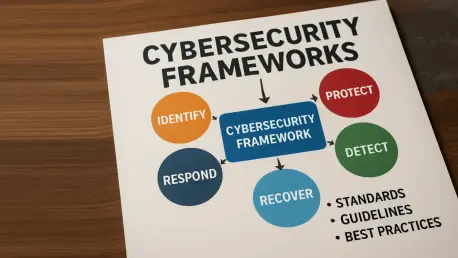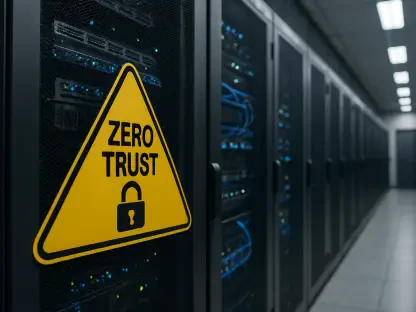The digital age is marked by an ever-growing reliance on technology and interconnected systems, creating an urgency for robust cybersecurity measures. Within this framework, the Common Vulnerabilities and Exposures (CVE) program plays an indispensable role. However, recent concerns raised by Democratic members of Congress about the CVE program’s funding uncertainties have sparked widespread debate. This roundup article gathers insights from experts across the cybersecurity domain, examining the potential consequences and strategic responses to funding challenges impacting this critical program.
The Critical Role of CVE in Cybersecurity Frameworks
CVE’s significance in the cybersecurity ecosystem cannot be overstated. Experts universally agree on its role as a cornerstone in the identification and categorization of vulnerabilities. Facilitating structured communication about threats between public and private sectors, the CVE program ensures that stakeholders are equipped with essential data for proactive defense strategies. In the absence of reliable CVE information, many fear that organizations will falter in promptly mitigating threats. The impending question is how effectively the program can continue to operate under fluctuating budget constraints.
Why secure, sustained funding for CVE is non-negotiable resonates across professional circles. Several cybersecurity leaders point out that without stable financial support, the program risks falling behind in maintaining its comprehensive database of vulnerabilities. This lag would inevitably lead to delayed responses to emerging cybersecurity threats. Such delays are detrimental given the escalating sophistication of cyberattacks. Thus, the certainty of funding is integral to fortifying cyber resilience and minimizing exposure to potential breaches.
Navigating the Article: A Deep Dive into Funding Dynamics and Cyber Implications
Delving into the complexities of the funding dilemma, congressional perspectives provide rich context. While recent legislative actions signal intent to safeguard cybersecurity initiatives, particularly for agencies like CISA, debates persist. This discourse among policymakers highlights varying priorities, where funding cybersecurity measures competes with other urgent national concerns. Data-driven insights illustrate how funding instability directly disrupts vulnerability management, culminating in a domino effect that impacts the broader digital landscape.
Balancing budget allocations against the backdrop of growing cyber threats presents a formidable challenge. Industry analysts argue for revising budget frameworks to prioritize cybersecurity, noting that deficit-driven reductions compromise national security. Proposals suggest that innovative funding models need exploration, seeking a balance that accommodates essential cybersecurity expenditures while maintaining fiscal responsibility.
Vulnerability Identification in Limbo: Real Consequences of Funding Interruptions
The ramifications of interrupted funding for vulnerability identification are stark. With the potential for halts in operations, cybersecurity teams might struggle to keep pace with identifying new threats. The consistent turnover of updated vulnerability data to entities across sectors serves as a vital weapon in thwarting attacks. The stability of these operations hinges on continuous financial backing, underscoring the need for sustained support.
As the industry heavily relies on CVE data, both public and private sectors face risks from uncertain security foundations. Professional forums and discussions highlight the dependency of countless organizations on CVE data for developing effective risk management strategies. Interruptions in the flow of this information could lead to increased susceptibility to cyberattacks, straining resources further as businesses scramble to fill the gaps.
Therefore, navigating contemporary cyber threats with uncertain security foundations involves reassessing existing strategies. Growth in cyber landscapes necessitates that defense mechanisms evolve analogously. In adapting to modernized attack vectors, experts advocate for adopting agile practices that anticipate and respond to threats, even amidst financial constraints.
Emerging Threats: Adapting to Evolving Cyberattack Techniques and Tools
The dynamic nature of cyber threats demands that security measures must be equally adaptable. With ever-evolving techniques and tools, cybersecurity teams are urged to embrace flexibility in countering novel methods of attack. The frequency and sophistication of recent exploitation techniques call for innovation in security responses and potentially, what some experts suggest, a reassessment of traditional defensive paradigms.
There is a growing realization of regional disparities in cybersecurity capabilities, presenting an additional layer of complexity. Bridging gaps between regions becomes increasingly vital to establish a unified cyber defense front. Collaboration between nations and industries could present opportunities for sharing knowledge and resources, fostering the development of a cohesive approach to cyber protection.
The developing landscape necessitates challenging norms and rethinking cyber defense strategies, particularly in the face of funding shortfalls. Many voices within the cybersecurity community highlight the urgency of exploring alternative defense models that operate effectively despite limited resources. This could involve integrating advanced technologies that optimize resource allocation and enhance threat identification capabilities.
Exploring Alternative Pathways: Innovative Solutions in the Face of Funding Gaps
Amidst financial challenges, exploring alternative pathways becomes crucial. Innovative solutions are thriving as organizations harness cutting-edge technologies to supplement traditional cybersecurity measures. A noteworthy example is the adoption of AI-driven analytics, which offers streamlined vulnerability identification processes and more efficient risk assessments. Leveraging these advancements can mitigate the impact of funding gaps on overall cybersecurity effectiveness.
By comparing global approaches to cybersecurity funding, valuable insights emerge on navigating these common challenges. Some regions lead with successful frameworks that ensure consistent investment in cybersecurity initiatives, proving instructive. Learning from these strategies, the international community can benefit from shared knowledge and collaborate toward an adaptive cybersecurity model responsive to financial constraints.
Speculative futures consider the evolving role of cybersecurity initiatives as new technologies become entrenched in operational strategies. The potential rise of autonomous security systems and enhanced cross-sector collaboration represents a shift toward a more robust defense infrastructure. Envisioning this next era involves innovating while leveraging insights from past challenges.
Conclusion
The pervasive uncertainty surrounding CVE Program funding has underscored the critical need for robust cybersecurity infrastructure. With funding challenges poised to impact vulnerability management processes, proactive strategies become essential. Stakeholders must engage in gearing up for cybersecurity dynamics, drawing lessons from current scenarios, and implementing strategies to maintain resilience.
Future considerations involve exploring financial models fostering sustainable cybersecurity initiatives while remaining vigilant against evolving cyber threats. As the digital landscape progresses, a concerted effort stands pivotal in strengthening defenses and ensuring security within an increasingly interconnected world.









